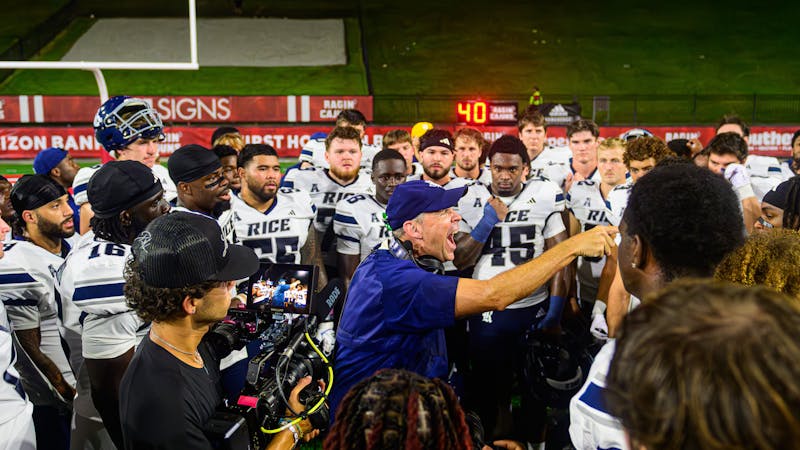Classic flicks: Wadleigh's Woodstock
For those of us without relatives or friends old enough to remember the "Summer of Love" of 1967, we have Woodstock. The Summer of Love kicked off one of the greatest cultural moments in our nation's history - the hippie revolution - which effectively came to a close with the Woodstock Festival in 1969. A huddled mass of 500,000 hippies made the trek to Bethel, N.Y. to watch 32 different musical acts perform over three days of "peace and music." After working previously as cinematographer on several underground films, Michael Wadleigh finally - and for the only time in his career thus far - experienced commercial success with Woodstock, making $50 million from a movie with a budget of $600,000.
The film features a set list of 18 artists, including Sly and the Family Stone, Santana, Jefferson Airplane and The Who, whose performances reverberate with such vitality that they feel immediate: From the forceful Ritchie Havens opener to the virtuoso Jimi Hendrix solo, Woodstock brims with energy from start to finish. It is hard to accept the fact that many of those who performed at Woodstock are either our grandparents' age or dead.
Woodstock contains some of the best documentary cinematography ever exposed on film - the way Wadleigh's crew manages the trifold shots blew me away when I first watched Woodstock. The three-way split-screen means three times as much film on the screen, and it gives one more reason to re-watch a film.
Unfortunately, misuse of this interesting cinematographic technique in the hands of lesser directors has made the use of split-screen somewhat of a cliché. But Wadleigh was one of the first to get it right: For example, during Santana's performance, he seamlessly portrays the symbiosis between the Latin rhythm section and Carlos Santana's intense lead guitar. In Wadleigh's hands, the split-screen streamlines and propels the narrative.
A chunk of the film is devoted to the concert attendees: We watch Ewill
a group of hippies skinny-dipping, see young parents playing with their child and hear tales of arduous journeys. Had Wadleigh only focused on the performances of the musicians, Woodstock would have fallen by the wayside of musical-cinematic history, like many run-of-the-mill concert films. In the same way, the Woodstock festival might just as easily have gone down in history as just another gathering of pot-smoking youth who shared a love for making peace, making love and making music.
More than 100 miles of film from 16 cameras were finally cut down to just over three hours of footage in the editing room, meaning the order of performances is only roughly chronological, and several entire acts were left out in the final cut. And believe it or not, two members of Woodstock's editing team were Martin Scorsese and Thelma Schoonmaker. Schoonmaker would later work as editor and cinematographer for Scorsese on many of his films.
The 55-year-old tradition of rock stars appearing in mediocre film roles stands in contrast to the rich tradition of rock stars appearing as themselves in great concert films. The more great documentaries I watch, the more I become convinced that the only role one is able to play honestly and convincingly is that of oneself. Ringo said it best: "All I have to do is act naturally." I recommend D.A. Pennebaker's Monterey Pop (1968) and Martin Scorsese's The Last Waltz (1978), two of the best titles in the rockumentary genre, which are in the direct cinema vein of Woodstock.
I also would like to point the interested viewer to the great films concerning that fabled yet still extant institution of rock 'n' roll - The Rolling Stones. A disproportionate number of distinguished directors have directed films devoted to the Stones, including Albert and David Maysles' Gimme Shelter, Jean Luc-Godard's Sympathy for the Devil (or One Plus One) and Robert Frank's unreleased Cocksucker Blues. (A court order forbids the film from being screened except in the presence of the director, as it apparently shows the Stones acting too much like themselves.) Scorsese himself has frequently mentioned the Stones' influence on his filmmaking; he finally directed a film on the skin-and-bones Stones in 2008 entitled Shine a Light.
The remastered 40th-anniversary edition of Woodstock includes two hours' worth of unseen performances, not to mention it comes handsomely packaged. We are lucky to have a film like Woodstock, which so ably captures the zeitgeist of an era that seems so long ago.
More from The Rice Thresher

Over 1,000 students petition against new meal plan
When Konstantin Savvon opened the Housing and Dining email announcing the new unlimited meal plan, he was instantly concerned about the impact on off-campus students like himself.

Rice football wins season opener under new coach
For the first time since 2018, Rice football opened its season with a victory. Scott Abell was soaked with yellow Powerade following a 14-12 win on the road Saturday against the University of Louisiana at Lafayette, which won 10 games and made it to the Sun Belt Conference championship last season.

Acting like an athlete: Rice basketball alum takes on Broadway
Underneath Chadd Alexander’s Broadway costume, there’s ankle tape and wrist braces — same protective gear he wore as a walk-on basketball player at Rice, though now he’s performing eight shows a week in the ensemble of “Harry Potter and the Cursed Child” instead of running conditioning drills in Tudor Fieldhouse.

Please note All comments are eligible for publication by The Rice Thresher.